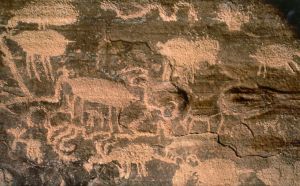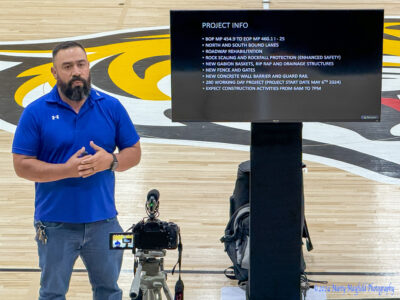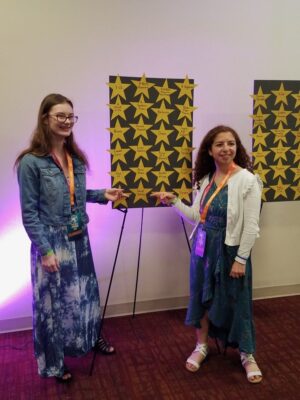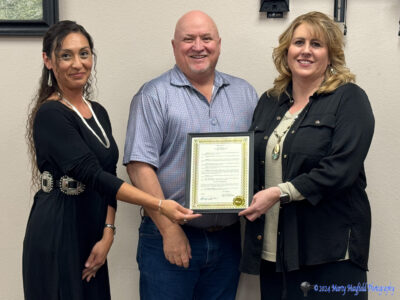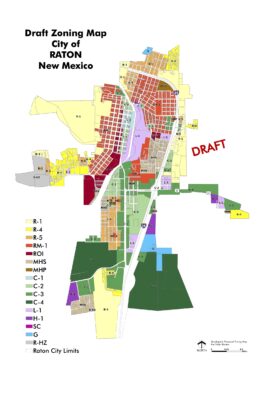But who were these ancient people? Part 2 of 2.
by Bob Kennemer
 COLFAX, LAS ANIMAS, HUERFANO — In part one of this series we met Dr. Larry Loendorf, an archaeologist and anthropologist with extensive field experience in southeast Colorado and northeast New Mexico. He recently spoke in La Veta. Most of Loendorf’s work in our area has been focused on the Piñon Canyon Maneuver Site east of Trinidad, but there are several other sites in the area including Apishapa Canyon State Wildlife Area, Cuchara Canyon, the Sopris Site (now underneath Trinidad Lake State Park), Glorieta Mesa in New Mexico and numerous sites on private property. Many were occupied by the same peoples.
COLFAX, LAS ANIMAS, HUERFANO — In part one of this series we met Dr. Larry Loendorf, an archaeologist and anthropologist with extensive field experience in southeast Colorado and northeast New Mexico. He recently spoke in La Veta. Most of Loendorf’s work in our area has been focused on the Piñon Canyon Maneuver Site east of Trinidad, but there are several other sites in the area including Apishapa Canyon State Wildlife Area, Cuchara Canyon, the Sopris Site (now underneath Trinidad Lake State Park), Glorieta Mesa in New Mexico and numerous sites on private property. Many were occupied by the same peoples.Many of these sites are discussed in Loendorf’s book, ‘Thunder and Herds.’ This book is considered to be the best on the subject of rock art in our region and is utilized by lay readers and academics alike.
Most of the rock art in our region are petroglyphs (pecked or etched in stone) as opposed to the much rarer pictographs, which are painted on stone or other surfaces. America’s ruins and rock art were primarily made during the Paleo-Indian Period, ranging from about 15,000 BCE (before common era) until about 7,000 BCE. This period covers the time when people first came to and spread across the Americas. The period is split into three successive temporal units, marked by the Clovis, Folsom, and Plano cultures.
The oldest rock art found in our region is often referred to as ‘abstract’ and was created during the archaic period, which began around 7,500 years ago and continued until 2,000 years BCE. Petroglyphs are often odd images of various shapes and patterns, which are etched into naturally occurring varnish deposits found on rocks. Anthropomorphs (human) and animal figures are also represented in the rock art of this period.
Interpreting rock art is an evolving art and science, especially with abstract pieces. In many cases the lines, swirls, and squiggles simply have no known rhyme or reason. However, as scientists combine additional artifacts with their growing knowledge of abstract rock art, some reasonable interpretations begin to emerge. For example, there are several sites in our region where rock art panels that looked like some kind of woven web or mesh are now believed to represent nets used in cutting off animals for a hunt.
Hunting animals on the wide open plains was difficult to impossible, for the prey could easily see the predators coming. This time period was also before the bow and arrow and before horses were introduced to the Americas. Thus, primitive peoples tended to hunt near rock formations and in canyons, where they could remain unseen by their prey. By pushing or luring animals into these rocky areas, the entrances and exits could be blocked using large nets to prevent escape. A group of hunters could then converge on the animals. These rock art panels could be marking a hunt site, or represent a hope or vision for a successful hunt.
Again, as noted in part one, these drawings are not actual art. Rather they are cultural and spiritual representations, made by a variety of ancient peoples. The people used carefully shaped rock points to hunt and do work. Previously it was believed these ancient people somehow disappeared, due to drought, lack of game, or newcomers driving them out. According to Loendorf many of these factors could have affected these people, but there is mounting solid evidence that some stayed.
Loendorf believes the Apishapa evolved out of the archaic period and ultimately became what we now refer to as the Wichita and the Pawnee. They went from being hunter/gathers to growing crops like corn. Ultimately, the Apache came in and took control of the region. It is exciting to know that primitive humans have been in this region for 12,000 years and left so much behind for us to learn from.
Now retired, Loendorf spends his time with his non-profit called Sacred Sites Research Program. To learn more or to make a donation, check the site out at: www.sacredsitesresearch.com

